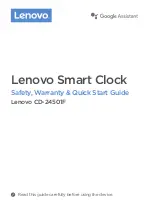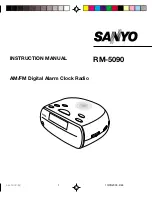
Version 1.0
©Copyright 2015, Ambient LLC. All Rights Reserved.
Page 2
1
Introduction
Thank you for your purchase of the Ambient Weather Radio Controlled Analog Wall Clock. The
following user guide provides step by step instructions for operation and troubleshooting. To
download the latest manual and additional troubleshooting tips, please visit:
http://ambientweather.wikispaces.com/rc1200bc
2
Quick Start Guide
1.
Set Time Zone and Daylight Savings Time switch (Section 7).
2.
Insert the battery.
3.
Hang the clock on the wall.
4.
Wait 24-48 hours for the correct time to set.
3
Overview
The radio controlled wall clock (RCC) updates time and date automatically using a radio receiver
from the atomic time transmitted from Fort Collins, CO, USA (WWVB).
This signal is shortwave, and travels thousands of miles by bouncing off of the ionosphere. The signal
is best received at night when there is no solar interference.
The radio controlled clock never requires setting, and automatically adjusts to daylight savings time
(DST). This feature can be overridden for locations that do not observe DST (examples, Arizona and
Hawaii).
Features include:
Noise free second hand
Hour, minute and second hands
Automatic daylight savings time update and leap year observation
Four time zone settings (Pacific, Mountain, Central, Eastern)
Long battery life
The radio controlled reception is attempted every two hours, and generally is successful at night. Just
one successful synchronization per day is sufficient to accurately set the clock to the second.
4
Important Notes
Before using this product, please read the following :
1.
Read these instructions – All operating instructions should be read before the unit is operated.
2.
Operate and store in a dry location. Do not operate outside.
3.
The product must be protected against electromagnetic fields, static electrical fields, extreme
temperatures, and moisture.
4.
Clean only with soft damp cloth.
5.
Do not use near any heat sources such as radiators, heat registers, stoves, or other device
(including amplifiers) that produce heat.


























